- Freshwater has become a scarce resource globally, especially in arid regions like the Middle East.
- Abu Dhabi uses solar-powered desalination plants to restore habitat for reintroducing Arabian oryx.
- Benefits of coastal and inland desalination plants must be weighed against potential drawbacks in terms of environmental health.
The lack of freshwater in arid regions of the world leads to spiraling negative effects on both wild ecosystems and the human world.
Global freshwater supplies are in decline due to climate change and human overuse, while, according to scientists at the University of Wisconsin’s Center for Limnology, the “provisioning of water to water-stressed regions for human need is routinely done at the expense of ecosystems, both aquatic and terrestrial”. In “State of the World’s Freshwater Ecosystems: Physical, Chemical, and Biological Changes,” Stephen Carpenter and colleagues state that, “conventional responses to water scarcity are withdrawals of deep groundwater and surface water storage. In many regions,…groundwater withdrawals exceed recharge, so groundwater pools are declining and groundwater-dependent ecosystems are threatened”.
The depletion of natural freshwater sources for wild ecosystems catalyzes negative interactions between humans and wildlife. For example, California’s diminishing, natural freshwater resources prompt black bears and other wildlife to enter human-populated areas to access freshwater, where they are met, at times, with hostility and can be “riddled with bullets” if seen.
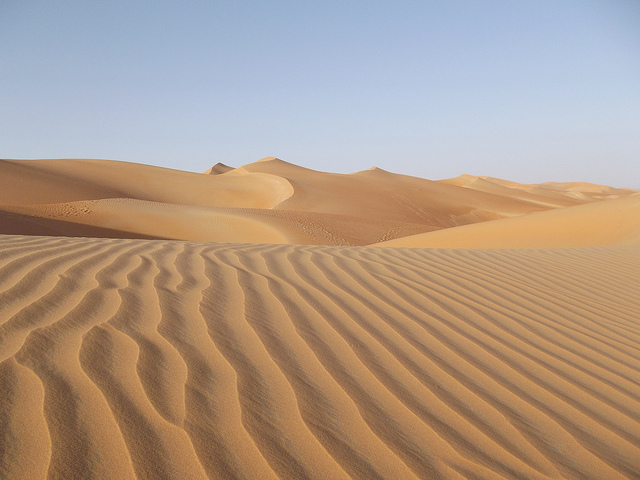
While some freshwater resources are obtained naturally, through seasonal streams and pools, communities in arid regions extract water more frequently through artificial means: wells, dams, underground aquifers and, more recently, desalination plants. Freshwater resources are depleting rapidly with the rise of the human population. “Saudi Arabia’s water demand has increased from 2.3 million cubic meters in 1980 to 30 million cubic meters in 2000” due to increases in population and development (National Commission for Wildlife Conservation and Development, Saudi Arabia 2005). As of 2011, the United Arab Emirates became the second largest producer of desalinated water in the world, pumping a total of roughly 1.7 billion cubic meters per year.
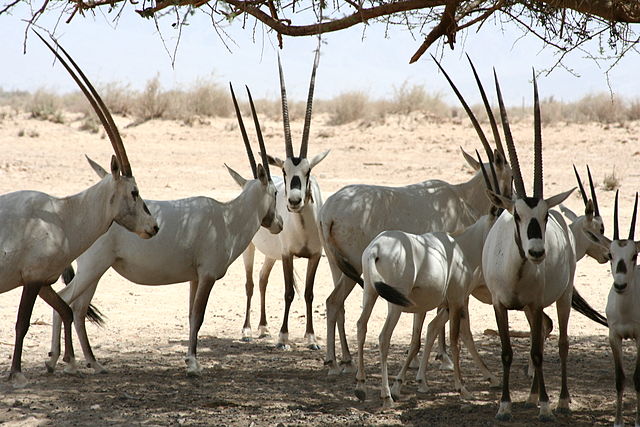
Using the sun to restore desert habitat
Still experimental in much of the world, solar powered desalination plants are already being used by countries in the Middle East for habitat rehabilitation and irrigation. Abu Dhabi has installed a series of 30 Hitachi Infrastructure Systems Company solar-powered desalination plants, many of which were built at Arabian oryx (Oryx leucoryx) reintroduction sites, as part of a pilot project.
The Crown Prince of Abu Dhabi, His Highness Sheikh Mohamed bin Zayed Al Nahyan, created an Arabian oryx habitat rehabilitation project to reintroduce the vulnerable species into protected areas in Abu Dhabi. The conservation project occurred between 2007 and 2012, with 100 individuals released per year for five years into large sanctuaries. This species of oryx had been hunted to extinction in the wild by 1972 for its horns.
The oryx is one of the largest mammals in the Arabian Desert, and its natural range extends across the Arabian Peninsula. This species, adept at enduring temperatures of over 100 degrees Fahrenheit (37 degrees Celsius), can survive for weeks on the water gleaned from dew and vegetation by reducing its metabolism and water loss. It is believed to be the model for the mythical unicorn because, if viewed a certain way, the horns appear to come together as one, resembling a unicorn horn. For decades, however, drought, groundwater extraction, and overgrazing of livestock have damaged the oryx’s desert habitats, according to the International Union for Conservation of Nature (IUCN), potentially jeopardizing the rehabilitation effort.
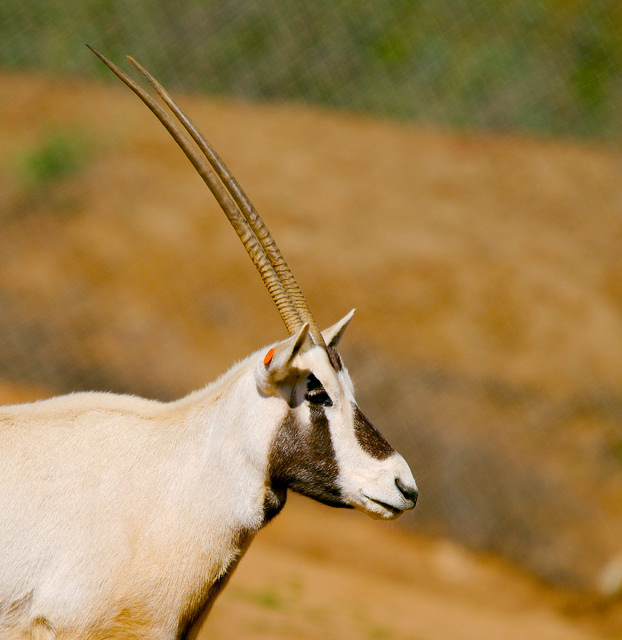
The Dubai Desert Conservation Reserve began reintroducing the oryx in 1999 and is in charge of monitoring approximately 140 square miles (225 km sq) of habitat for recovering desert species, including the oryx.
In 2006, a second herd of Arabian oryx was released into a sanctuary in Umm Az Zumul, Abu Dhabi. The wild population has grown to at least 1,000 individuals – possibly up to 4,000 according to the General Secretariat of the Conservation of the Arabian Oryx.
To support the reintroduction effort, the Abu Dhabi government has placed solar-powered desalination plants in protected native oryx reintroduction sites. Before the mammals are released, the desalination plants help rehabilitate the landscape by producing watering holes and vegetation that provides food and shade for the animals.
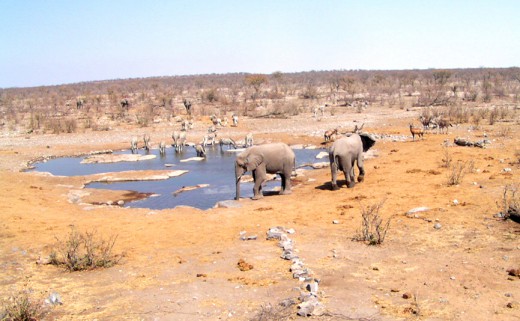
Each plant produces roughly 6,600 gallons of clean water on an average day. The Secretary General of the Environmental Agency- Abu Dhabi, Al Mubarak, described the solar-powered desalination process as follows: “…each solar array measures 300 square meters at each site and this powers a pump that abstracts groundwater from a well. Reverse osmosis uses pressure to separate clean water from brackish water through a semi-permeable membrane. A subsurface irrigation system then pumps the clean water to a pond. The brine, or waste-water from the process, is pumped to a separate evaporation pond”.
The Hitachi Infrastructure Systems Company would not permit use of a diagram of the solar-powered desalination plants being used to produce freshwater for the Arabian oryx and their desert habitat, but you can see it here. A Hitachi company video describes the reasoning behind installing the plants and the challenges the project faced in its implementation.
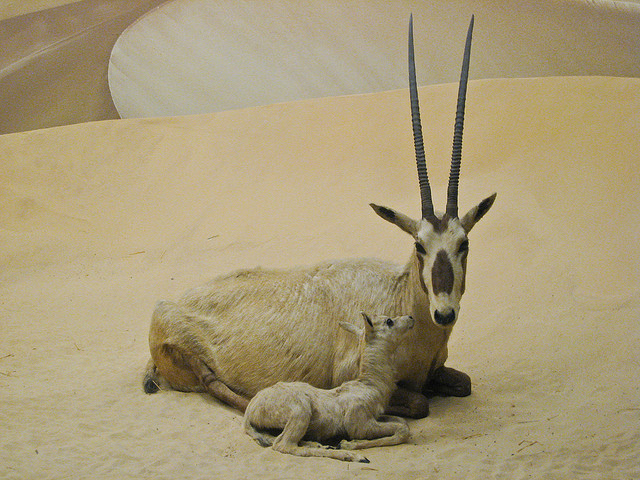
Controversy over desalination plants
Despite the success of the Arabian oryx reintroduction effort, the use of fossil-fueled desalination plants, and even solar-powered desalination plants, is controversial. The energy use is minimal, and the creation of quality habitat is key to reintroducing some arid-habitat specialists. However, the outflow of the plants by the sea spits brine—the left-over water containing high concentrations of salt—back into coastal waters, where the brine falls to the bottom, increasing the area’s salt content and potentially harming the local marine life. Plants that use the brackish groundwater may jeopardize critical water supplies for surrounding ecosystems or communities. Fossil-fueled desalination plants also emit greenhouse gases, ultimately creating a cycle of a warming climate and an increasing need for water extraction.
One reintroduction program has had challenges with providing high-quality habitat and food for the oryx. In 2013, researchers have observed malnourished populations of oryx with no calves recorded, highlighting the need for quality habitat and presence of food in restoring healthy populations and the challenges facing reintroduction programs in arid regions.
Do the benefits of solar-powered desalination plants in improving degraded habitat in parched landscapes outweigh the potential drawbacks enough to be recommended for freshwater for habitat rehabilitation and wildlife reintroductions?
How can the conservation community bring conservationists, environmentalists and engineers together to create new systems with the fewest drawbacks and the most benefits? Add your thoughts to the discussion on Facebook here!